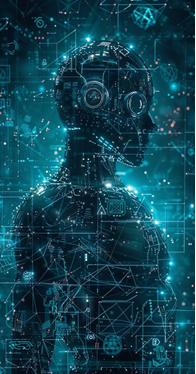By George-Alexander Panagopoulos, Andrew Alexandris
& Thanasis Pettas-Pentarakis
Back in ancient times, people talked about creating machines that think. This dream began to grow in the mid-1900s with digital computers (a big step forward). Important work by folks like Alan Turing set the stage for AI. In 1956, a big meeting called the Dartmouth Conference introduced the term «Artificial Intelligence.» At first, researchers investigated games, expert systems and understanding human language. But they faced challenges – funds dried up and interest waned (the «AI Winters»). In recent years, AI has come back stronger due to progress in machine learning (especially deep learning). Better computers and massive data collections have sparked new discoveries: image recognition, speech understanding and more. Today, AI is everywhere – from search platforms and social media to self-driving vehicles and health scans.
Machine learning is a field of AI specialized in helping systems learn from data. Some methods: supervised learning (for tasks like recognizing images), unsupervised learning (using grouping techniques) and reinforcement learning (in robots) are extremely useful in different areas like healthcare, finance and beyond. Deep learning uses neural networks to mimic how the human brain works and has truly transformed what AI can do. It supports tasks from language processing (for chatbots) to self-driving vehicles, showing how flexible and widespread AI is becoming. New hardware, such as GPUs, TPUs and developing brain-like chips, has sped up AI’s training and use. Trends like quantum AI, explainable AI and AI for improving society hint at big changes ahead.
ChatGPT, a smart tool for handling language, shows how AI can change things. AI has the potential to handle tasks, even those once thought of as unique and hard to automate. ChatGPT shows this by creating text that sounds like a person wrote it ‒ helping with writing emails, crafting stories and even answering tough questions. This way, it really increases productivity and how smoothly things work in many areas: business, education and personal chats. However, it’s essential to develop AI with care. Coping with possible biases and maintaining transparency is very important. There is also a need for responsible use of AI in schools and building brands. Making sure AI is used wisely is very important to eliminate bad effects and benefit from it.
BIBLIOGRAPHY
The History of AI: A Timeline of Artificial Intelligence
What is the history of Artificial Intelligence (AI)?
What Is Machine Learning (ML)?
The Impact of AI: How Artificial Intelligence is Transforming our Society?



